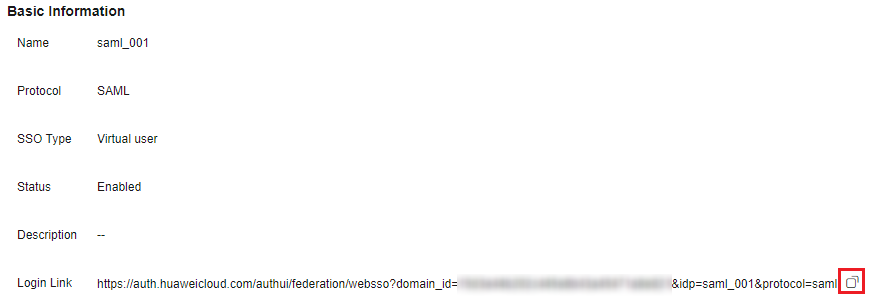Configuring a Federated Login Entry in the Enterprise IdP
Configure a federated login entry in the enterprise IdP so that enterprise users can use the login link to access Huawei Cloud.

If no login link has been configured in your enterprise management system, federated users in your enterprise can log in to Huawei Cloud through the Huawei Cloud login page. For details, see Logging In as a Federated User.
Prerequisites
- An IdP entity has been created on Huawei Cloud. For details about how to create an IdP entity, see Creating an IdP Entity.
- The login entry for logging in to Huawei Cloud has been configured in the enterprise management system.
Procedure
- Log in to the IAM console. In the navigation pane, choose Identity Providers.
- Click View in the row containing the IdP.
Figure 1 Viewing IdP details

- Copy the login link by clicking
 in the Login Link row.
Figure 2 Copying the login link
in the Login Link row.
Figure 2 Copying the login link
- Add the following statement to the page file of the enterprise management system:
<a href="<Login link>"> Huawei Cloud login entry </a>
- Log in to the enterprise management system using your enterprise account, and click the configured login link to access Huawei Cloud.
Feedback
Was this page helpful?
Provide feedbackThank you very much for your feedback. We will continue working to improve the documentation.See the reply and handling status in My Cloud VOC.
For any further questions, feel free to contact us through the chatbot.
Chatbot





